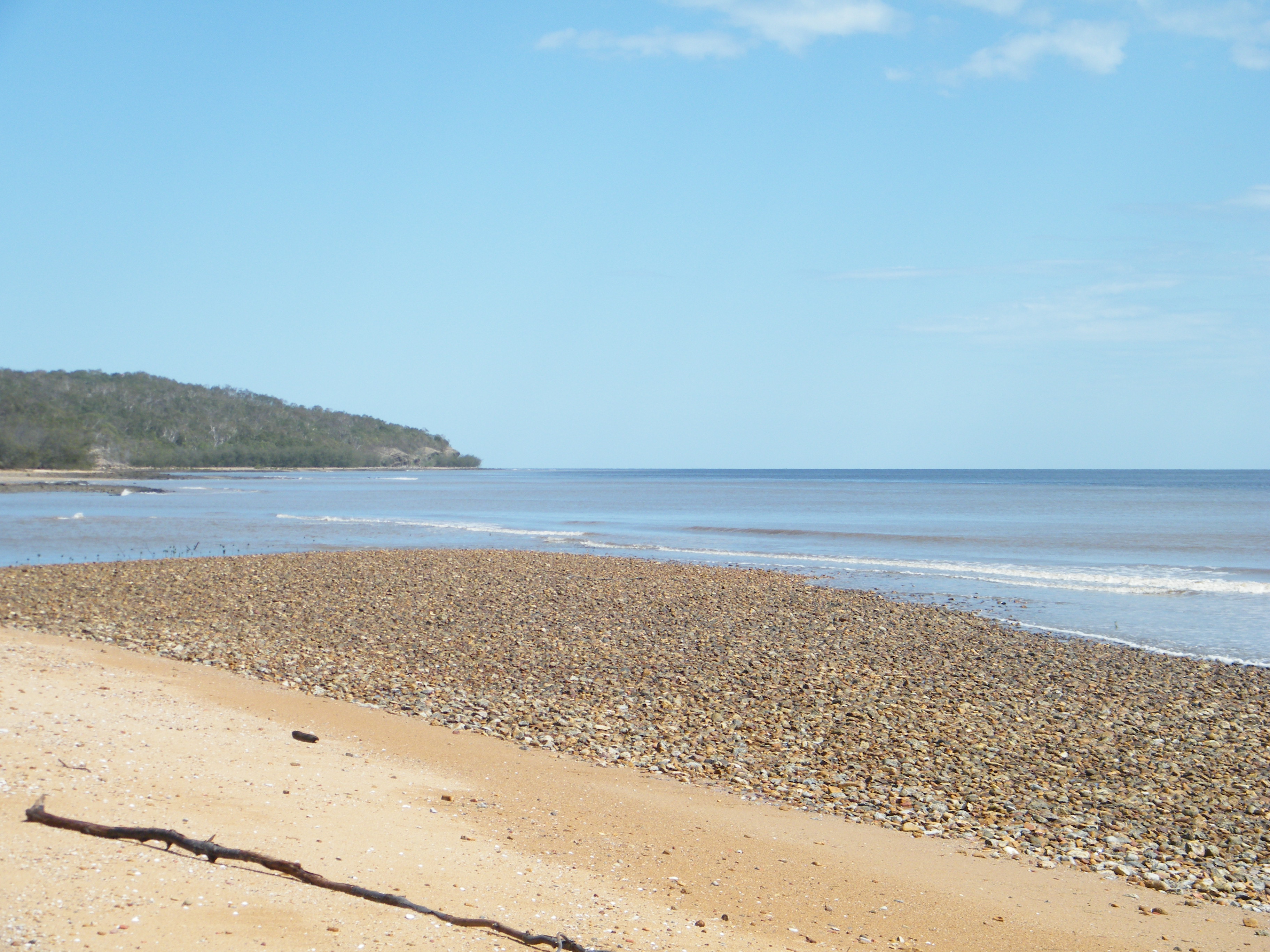|
|
Intertidal unknown energy over gravelShort descriptionIntertidal gravel-dominated substrate where energy is unknown. Disclaimer: Ecosystem type descriptions are based on biophysical attributes identified in Central Queensland through expert advice and supported by scientific literature. Not all ecosystem types are mapped based on current inventory, and many of the ecosystems described here may also occur in other parts of Queensland.
Classification categoriesSelect from the links below to view related ecosystem type categories Long descriptionIntertidal gravel-dominated substrates where Energy magnitude is unknown. Gravel is the collective term for unconsolidated particles between 265 and 2mm in diameter, including cobbles and pebbles, but excluding boulders in the scheme. Gravels can include mixtures of other particles, i.e. Sediment textures of muddy gravels, sandy gravels, and muddy sandy gravel, together with those composed of carbonate (e.g. coral rubble, coarse coral gravel, shells and shellgrit). Gravels can be of various Substrate compositions, such as terrigenous (i.e. fragments of decomposed rock) and carbonate (i.e. coarse shellgrits and coral rubble). Gravels of terrigenous Substrate composition have formed from past and present erosion events and soil formation processes. They can include washed out and re-worked conglomerates re-deposited by previous storm events and sea levels, or weathered geologies in situ, for example duricrust nodules of iron and aluminium oxides from Tertiary deeply weathered soils (Land zone 7). May have similar values to low energy (type 33) or high energy gravel (type 32) depending on energy. Refer to these types for detailed discussion of each. Special valuesCan provide refuges for a range of sessile fauna depending on energy, together with birds and other mobile fauna that feed on the sessile fauna. Important to shorebird feeding, with many shorebirds Environment Protection and Biodiversity Conservation Act 1999-listed species (EPBC). Diagnostic attributesInundation 'Intertidal – Lower low', 'Intertidal – Mid low', 'Intertidal – Upper low', 'Intertidal – Low undifferentiated', 'Intertidal – Lower medium', 'Intertidal – Upper-medium', 'Intertidal – Medium undifferentiated', 'Intertidal – High', 'Intertidal – Undifferentiated', 'Intertidal – High undifferentiated' Sediment texture 'GRAVEL', 'muddy GRAVEL', 'sandy GRAVEL', 'muddy sandy GRAVEL' (note that the dominant grain size is capitalised) Energy magnitude 'Unknown' QualifiersCan also include modified ecosystem types such as intertidal parts of gravel roads and causeways and reclaimed areas filled with gravel, but still below the level of tidal inundation. The attributes of Substrate grain size and Inundation may be modified by fish traps. DistributionCan occur up and down the Queensland coast on exposed and protected coastlines adjacent to rocky headlands and coral reefs, or on gravelly geologies, including conglomerates, and as a result of riverine transport. The following relates to distribution of this ecosystem type within the Central Queensland mapping area:
CommentsRefer to type 32 (intertidal high energy over gravel) and type 33 (intertidal low energy over gravel). Last updated: 22 July 2019 This page should be cited as: Department of Environment, Science and Innovation, Queensland (2019) Intertidal unknown energy over gravel, WetlandInfo website, accessed 8 May 2025. Available at: https://wetlandinfo.des.qld.gov.au/wetlands/ecology/aquatic-ecosystems-natural/estuarine-marine/descriptions/37/ |

 — Department of the Environment, Tourism, Science and Innovation
— Department of the Environment, Tourism, Science and Innovation


